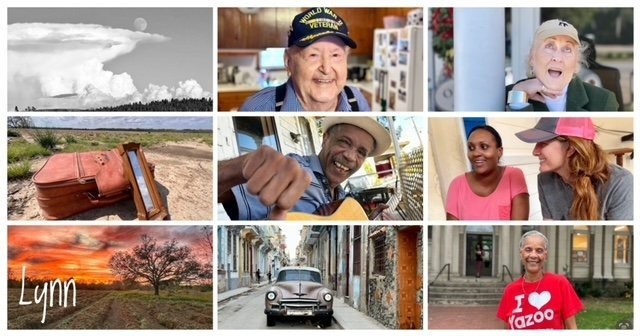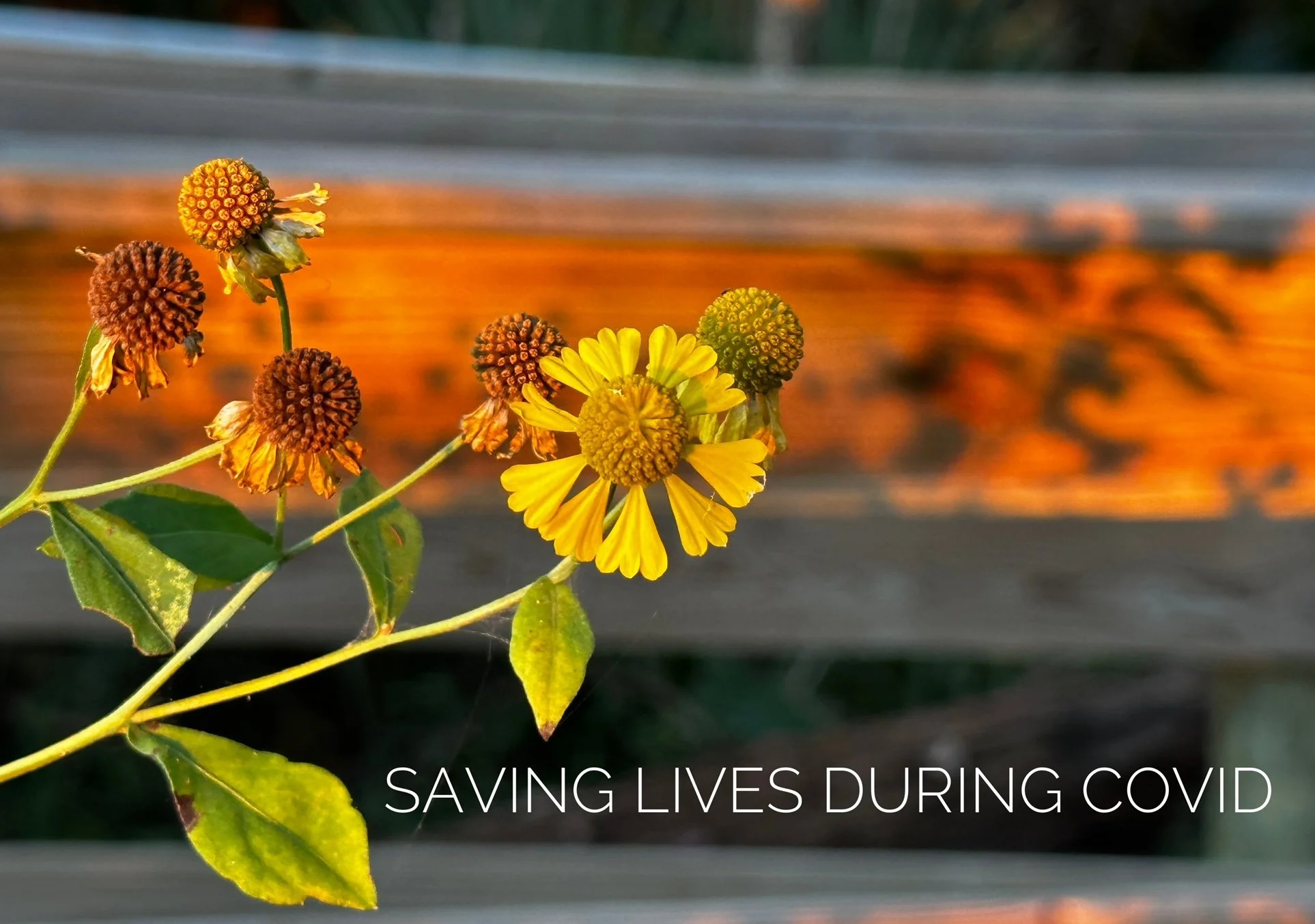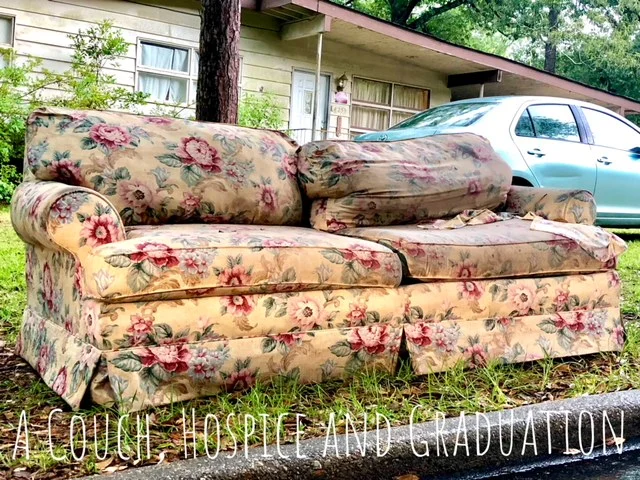Stress
The hardest part of reporting is what gets left out. Sometimes the story goes too long or in a different direction. Sometimes a person wants to talk anonymously, so their interview was used for background but didn’t go into the story
With the COVID stories for Lagniappe and APR, the stories that were left out were just as important as the ones that went in. Stories show that show the stress of a healthcare system, and those providing care, stretched to the limit.
During the height of Delta, one nurse described her job of giving care to the most urgent first as “playing chess with who gets a bed or care.” She went from room to room, deciding which emergency was more important.
“We were forced to make decisions none of us wanted to make,” she said.
It seemed that the critical patients burned through sedatives and drips almost as fast as she gave them, she said. Changing medications and tweaking dosages kept her running during her 12-hour shifts. Tracking so many narcotics made charting difficult, but it had to be correct. She was always behind and leaving work late.
“There was no time to pee,” she said. “We joked about wearing diapers. We would say ‘pee for me’ if someone had a bathroom break.”
Alarms were always going off. Was it a pump or a ventilator? Were vital signs dropping?
“I had nightmares from the alarms and not getting to them,” she said. “I often woke up in a panic.”
Watching “Downton Abbey” was how she tried to unwind. Her husband wanted her to quit her job. Instead she kept taking extra shifts because “who else was going to do it?”
After her shift, it wasn't unusual to see patients in stores who had tested positive for COVID-19 only hours before.
“We were getting our ass kicked in the hospital, and they weren’t even wearing a mask,” she said. “I would stare at them and let them know I saw them. They just shrugged. You are crossing the line when you are contagious, and your actions are infringing on another person's rights and putting them at risk.”
One of her patients was in ICU for more than 30 days.
“I've been a nurse for a long time and have never had a patient in the hospital for 30 days this sick for such a poor prognosis,” she said. “That's hundreds of thousands of dollars. Who is going to pay the insurance and healthcare systems? How are they going to keep paying us incentive pay? The money has to come from somewhere.”
While Emergency Departments were packed with COVID patients, regular emergencies still happened.
An 18-year-old boy sat in the emergency room with a broken leg for 21 hours before he saw a doctor. His parents couldn’t enter the hospital because they were sick and waiting for the results of COVID tests.
“He sat there with the bone out of his leg for 21 hours before they finally operated on him,” said the boy’s stepfather. “As he waited, he heard people dying. They finally put him in a room on the labor and delivery floor. His nurse was used to handling babies, not broken bones.”
Ambulances arrived around the clock, and the EMTs often waited for hours until their patients could be admitted.
One family sat in folding chairs across the street, waiting on news of their father, who had been admitted to the hospital with COVID that morning.
They made a game of counting ambulances and betting on when the next one would arrive.
“They come in every 15 minutes, and sometimes there are six here at a time,” the daughter said. “We have counted 60 so far.”
Her father went home several days later and is doing well.
Some patients went home, but the effects of COVID lingered, turning their lives upside down.
It’s not only the fatigue, brain fog, body aches and breathing problems that make so-called long COVID difficult, it’s the isolation and misunderstanding from friends and family.
“My family wonders what's wrong with me and why I don't do what I normally do,” said a COVID long-hauler. “My teenage daughter got upset with me because my facial expressions didn’t match my words. My facial expressions were going along with how difficult it was to get out what I needed to say. There was also miscommunication with my family members who didn’t know what was going on with me.”
She said friends and neighbors had COVID for a few days with no additional problems.
“People thought I was crazy because there was so much going on at one time,” she said. “I probably had 15 different symptoms going on the same day. It was embarrassing to talk about. I’ve also gained 35 pounds since COVID.”
She said coordinating communication and appointments with multiple doctors is difficult, and the bills are more than she can afford.
COVID sometimes infected whole families, even those who were vaccinated.
“We were so careful because my mom has colon cancer and moved in with us,” Lisa said. “Then everyone in my house got it. My mom, my husband, and my kids. When mom got worse, I had to drop mom off at the ER like a dog at a shelter. I was sick and couldn’t go in with her. It was a horrible feeling. I dropped her off at 8 p.m. She got into a room seven hours later.”
Lisa’s mother stayed in the hospital for eight days and came home on oxygen provided by the hospital.
“We are learning how to get mom and her oxygen tank to the doctor appointments,” Lisa said. “I am not feeling good yet, but I also have to go back to work and keep things going.”
As COVID spread through her friends and family, Lisa said, the pandemic made her more giving.
“I used to just send a get-well card, but that just made me feel better. It didn't help anybody,” she said. “Now I actually put meals or supplies they need on their front porch. Helping others makes me feel better. I think I grew up mentally a little bit.”
COVID was also stressful for doctors and their families.
“Cardiologists were concerned there were few ventilators for bypass surgeries and how that would affect their patients,” said the wife of a cardiologist. “There were stressful decisions in stressful situations. Those decisions took a toll on them.”
She said friends who called her husband for medical questions refused to listen to his recommendations about the vaccine.
“They call him about everything from pink eye and a hangnail to a parent with a racing heart, but when he says, ‘Here's what to do for COVID and how to save yourself,’ they don't trust his opinion,” she said. “How do you pick and choose what you trust doctors with?
“We are exhausted and frustrated,” she said. “We are like everyone else. We want life to move forward. We want to go to football games, concerts and music festivals. But we don’t want anyone to die because of it.”
In the beginning, doctors were flying blind and going with the information available, according to an OBGYN. But now they have the data to advise patients, especially pregnant ones, to get the vaccine.
“In the first year, COVID didn't seem to be affecting pregnant women any more than non-pregnant women,” he said. “But we’ve had at least four patients hospitalized in the last month because of COVID. There is a lot of misinformation on social media. Now it takes five or 10 minutes of extra time to dispel the rumors and talk through what they read on Google.
“I believe in personal freedom,” he said. “My goal is to try to educate every person that I can with facts, data and advice, but people aren't believing what we are saying.”
When schools closed and went to online learning, his wife, who runs his clinic, also kept the children of nurses and staff, so they could keep working and not worry about their kids.
Doctors not only saw a surge in COVID cases but also a surge in advanced stages of cancer and disease because of delayed annual checkups and primary care. Hospitals that were filled with COVID patients meant limiting surgeries and putting off the ones that weren’t emergencies.
“We are in a tidal wave of patients who were delayed a year-and-a-half before they could get to us,” a cancer surgeon said. “We're meeting patients for the first time in the hospital because they were too sick to come to the clinic. We are also seeing a lot of disease, suffering and death because we couldn’t get people in when it was preventable.
“The death toll from a hurricane doesn’t tell you the true extent of that damage or the infrastructure that was knocked out,” the surgeon said. “I think 10 years from now, we’ll be shocked by the real human cost.
“This pandemic has highlighted structural problems in Alabama’s healthcare system that have been present for decades,” the surgeon said. “What we decide to do with this information will dictate how we move forward in the future. Doing the same thing over again just doesn't seem like the right answer.”






